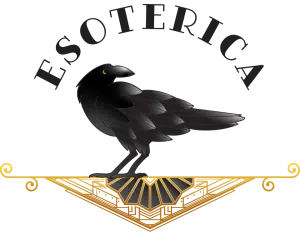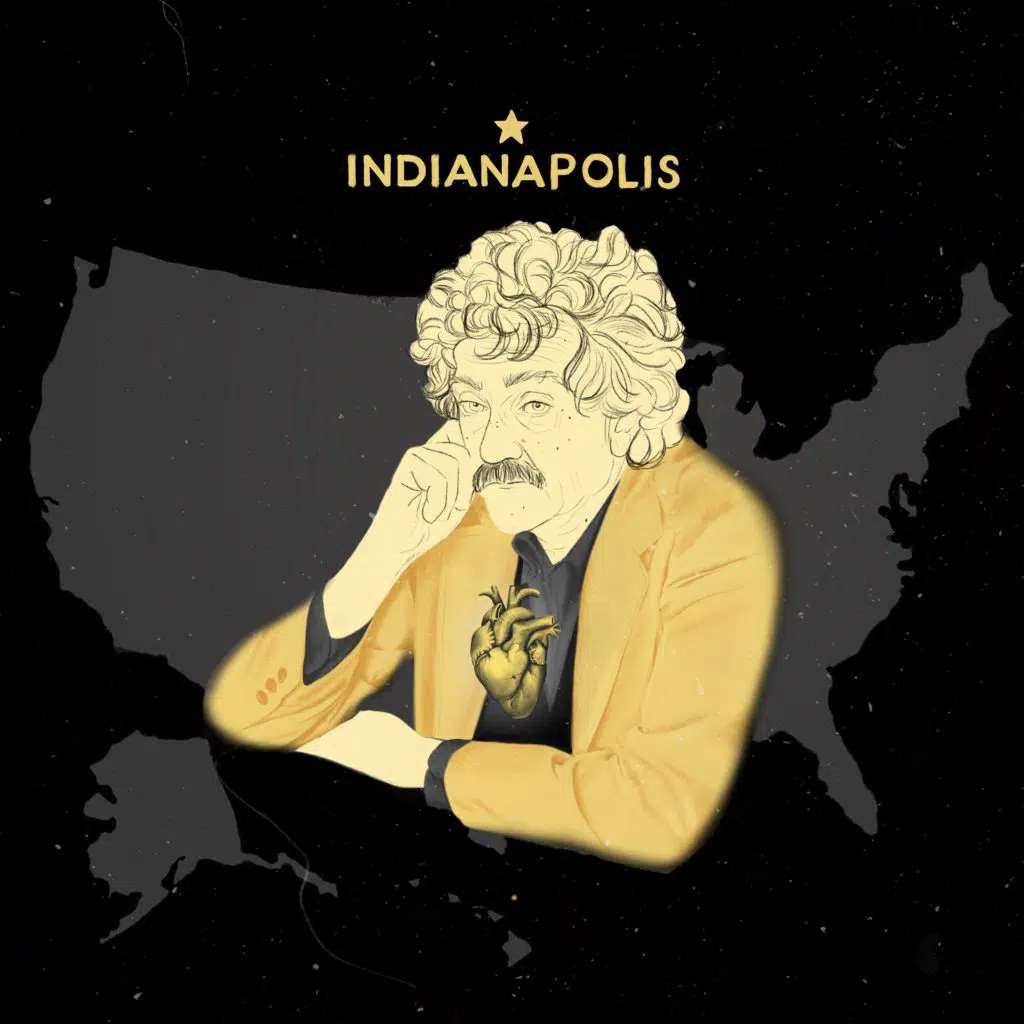By Robert Basler,
“Indianapolis, Indiana is the first place in the United States of America where a white man was hanged for the murder of an Indian. The kind of people who’ll hang a white man for murdering an Indian–that’s the kind of people for me.”
— Kurt Vonnegut
When I was growing up in Indianapolis, we didn’t seem to have much to be proud of as far as I could tell. Maybe an auto race people had heard of, but no national treasures. True, the city had produced some fairly well-known authors, like Booth Tarkington. For a while it seemed like he would be another Mark Twain, but then it turned out he lacked Twain’s staying power.
And the locally revered poet James Whitcomb Riley? They used to force-feed us his gibberish in grade school. “Little Orphant Annie’s come to our house to stay, An’ wash the cups an’ saucers up, an’ brush the crumbs away…” Yes, a little-known fact, “Little Orphan Annie” evolved from an 1885 Riley poem. An even more obscure fact: Riley wrote a poem about a guy fishing, called “At Broad Ripple,” and that title would eventually become the name of the high school I attended. Still, if I was looking for something to make me proud of my hometown, Riley wasn’t going to be it.
We did have David Letterman, but we didn’t know it yet because he was still in the aforementioned Broad Ripple High School. I was in his class, and he was just a below-average smartass who was usually in trouble because of his mouth. Come to think of it, that pretty much described me, too.
But then, in my teens, we suddenly got Kurt Vonnegut. And we – my friends and I – discovered him very early on, making him our own secret treasure. He wrote about Indianapolis, about irony, about all things crazy. He made no sense, he made perfect sense. Just when we were sure that nobody on earth understood us, Vonnegut did. I still recall in the ‘60s, standing at the New Arrivals shelf in the Indianapolis Public Library and casually scanning the cover jacket leaf of a novel called “Mother Night.” The blurb mentioned Indianapolis, Unitarians and several other trigger words that immediately grabbed my attention. This Vonnegut guy could be my next-door neighbor!
“I’ve wondered where home is, and I realized, it’s not Mars or someplace like that, it’s Indianapolis when I was nine years old.”
– Kurt Vonnegut
It turned out, hip people were reading Vonnegut. Smart people were reading Vonnegut. People who thought like me were reading Vonnegut. He just got more and more popular, and even when he was no longer living in Indianapolis, he still belonged to us. He went to the same school my parents did. He wasn’t just Indianapolis, he was Shortridge High School Indianapolis, arch-rival of Broad Ripple. We didn’t know it then, but the stage was being set for the Battle of the Hoosier Humorists.
Please understand, the high school branch of your family tree is seminal in Indianapolis. When I interviewed Letterman for Reuters, he had our 1965 high school yearbook open in his office at CBS, and I had to keep leading our conversation away from the old Broad Ripple days and back to the present. And in 1983, when I interviewed Vonnegut – more about that later – we had an ice-breaking conversation in his Turtle Bay co-op in New York City, and he asked where I was from. “Indianapolis,” I said. He brightened. “I’m from Indianapolis, too,” he said. As if I didn’t know that. “Where did you go to school?” he asked. “Indiana University,” I volunteered. Vonnegut scoffed. “No, no, I mean where did you go to HIGH School? I don’t care about your college!”
“All my jokes are Indianapolis. All my attitudes are Indianapolis. My adenoids are Indianapolis. If I ever severed myself from Indianapolis, I would be out of business. What people like about me is Indianapolis.”
– Kurt Vonnegut
Looking back, I think Vonnegut and I were in a “false karass.” If you’ve read “Cat’s Cradle,” you know that’s a group of people who affect a shared identity or purpose, but whose mutual association is meaningless. We both grew up in Indianapolis. We both moved to Upstate New York and then to New York City. Coincidental, to be sure, but meaningless, nonetheless.
Kurt dedicated one of his books to his brother, Bernard, “who is funnier than I am.” Bernard was an acclaimed scientist in Schenectady, New York, so when I moved to that part of the country, I decided to interview him. Bernard took me into his lab to explain the scientific experiment he was working on.
Bernard was obsessed with finding a way to measure wind speeds of tornadoes accurately. He knew that chickens on farms often lost their feathers during a tornado, so he devised a way to blow high-pressure streams of air at poor chickens, to see how much force was needed to de-feather them. He thought he was on to something, but then somebody told him that chickens in distress can voluntarily shed their feathers, so his experiment was useless. Then, because tornado stories often mentioned bits of straw being embedded in the sides of barns by the extreme winds, he came up with a powerful machine to shoot straw at planks, to measure what sort of velocity was required to penetrate a barn. While he was showing me his powerful sci-fi turbo-charged magnum straw-shooting tube gun, Bernard told me he really didn’t know why Kurt had said that thing about him being so funny.
Gee, that’s a real mystery, Bernard. Let me think on that.
“I trust my writing most and others seem to trust it most when I sound most like a person from Indianapolis, which is what I am.”
-Kurt Vonnegut
But back to Kurt, and our false karass. In the ‘80s we were both living in New York City and he was riding an enormous wave of popularity. Nearly everyone loved him, and college students worshiped him. It seemed like I should interview him. My timing was pretty good. He had just published “Deadeye Dick,” so he would want to promote it. Plus, the reviews were mixed, so he would really want to get out ahead of that.
I called his publicist with a request. Normally, the publicist sets up the interview, calls the journalist with the information, and that’s it. But Kurt had a different system, one that was new to me. The publicist gave me his home phone number. I was to call and set it up with Kurt himself, then throw away the number and never use it again. As I mentioned, the author was happy to have a fellow Hoosier in his living room, even if we were both really New Yorkers now. I was expecting gruff, but I got amiable. Expecting laconic but got loquacious. Once again I was reminded of how very fortunate I was, being able to spend time chatting with my favorite living author. I think journalists ought to feel grateful. I certainly did.
Kurt realized, of course, that he had a sweet deal going for him. ”I’ve never had a rewrite conversation with editors,” he told me, confiding that he suspected his publishers simply looked at his manuscripts and said, ”Christ knows what it is, but people buy it, so give us more of it.”
The author said that when he went for a walk in Manhattan, he reckoned he got recognized about once every 90 minutes, but very ironically, when he returned occasionally to Indianapolis, which figures prominently in several of his books, ”nobody ever recognizes me.”
Of course, Kurt was hardly a stranger to irony. As a character in his book, “Jailbird” put it, ”No American is so old and poor and friendless that he cannot make a collection of some of the most exquisite little ironies in town.”
Vonnegut and Indianapolis were good for each other. In 2010, three years after the author’s death, a plucky visionary named Julia Whitehead, who had never met Vonnegut, had the idea to open a museum dedicated to his work and to causes that were important to him – freedom of speech, social justice, censorship, the environment, etc. The Kurt Vonnegut Museum and Library is much more than a collection of his old typewriters and a very nifty gift shop. It sponsors community outreach programs that would have made Vonnegut proud. Julia raised the money for the Museum, and has been running it for a decade.
Another small irony: Vonnegut was famously anti-war, and Julia is a former U.S. Marine. And so it goes.
Speaking of delicious ironies, here is one. Some years ago, when it was noted that Kurt Vonnegut and David Letterman, two world class humorists, had both come out of Indianapolis, Kurt famously scoffed that there had been at least 10 people in his high school class who were funnier than Letterman. I doubt if he really believed that, by the way. Don’t take the bait, David! Just let it go! Fast-forward a few years, and the Museum wanted to give Letterman a Kurt Vonnegut humor award. Letterman, apparently still holding a grudge, declined to accept it. Damn, I guess he took the bait.
Robert Basler was a life-long journalist, spending most of his career with Reuters, in New York City, Hong Kong and Washington, DC. He reported from Beijing, Beirut, and Ulan Bator, among other places. He went through the Khyber Pass twice and was annoyed to find there were no souvenir t-shirts for sale. He now lives in Indianapolis, about a mile and a half from where Vonnegut grew up, and thinks the Kurt Vonnegut Museum is easily the coolest place in town.

